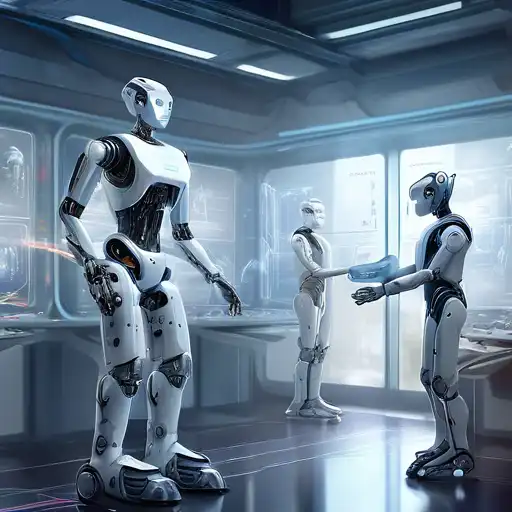The Dawn of a New Era in Robotics
The integration of Artificial Intelligence (AI) into robotics is setting the stage for a revolution that promises to redefine industries, enhance human capabilities, and solve complex problems. This fusion is not just about making robots smarter; it's about creating systems that can learn, adapt, and make decisions in real-time, opening up possibilities that were once confined to the realm of science fiction.
Understanding AI Integration in Robotics
At its core, AI integration in robotics involves embedding machine learning algorithms and cognitive computing capabilities into robotic systems. This enables robots to process information from their environment, learn from experiences, and perform tasks with minimal human intervention. From manufacturing floors to healthcare settings, the implications are vast and varied.
Key Benefits of AI-Driven Robotics
- Enhanced Efficiency: AI-powered robots can optimize operations, reduce errors, and increase productivity in ways that traditional robots cannot.
- Adaptability: With AI, robots can adapt to new tasks and environments without explicit programming, making them more versatile.
- Improved Decision Making: AI enables robots to analyze data and make informed decisions quickly, a critical advantage in dynamic settings.
- Human-Robot Collaboration: AI facilitates safer and more effective collaboration between humans and robots, enhancing teamwork in shared spaces.
Challenges and Considerations
Despite the promising advancements, integrating AI into robotics presents challenges, including ethical concerns, security risks, and the need for robust AI governance frameworks. Addressing these issues is crucial to ensuring that the benefits of AI-driven robotics are realized responsibly and equitably.
The Future Landscape
The future of robotics with AI integration is bright, with potential applications spanning autonomous vehicles, precision agriculture, and personalized medicine. As technology evolves, the line between human and machine capabilities will continue to blur, heralding a new age of innovation and discovery.
For those interested in the intersection of Artificial Intelligence and Robotics, staying informed about the latest developments is key to understanding the transformative potential of these technologies.
In conclusion, the integration of AI into robotics is not just an advancement in technology; it's a leap towards a future where machines and humans collaborate more closely than ever before. The possibilities are limitless, and the journey has just begun.
